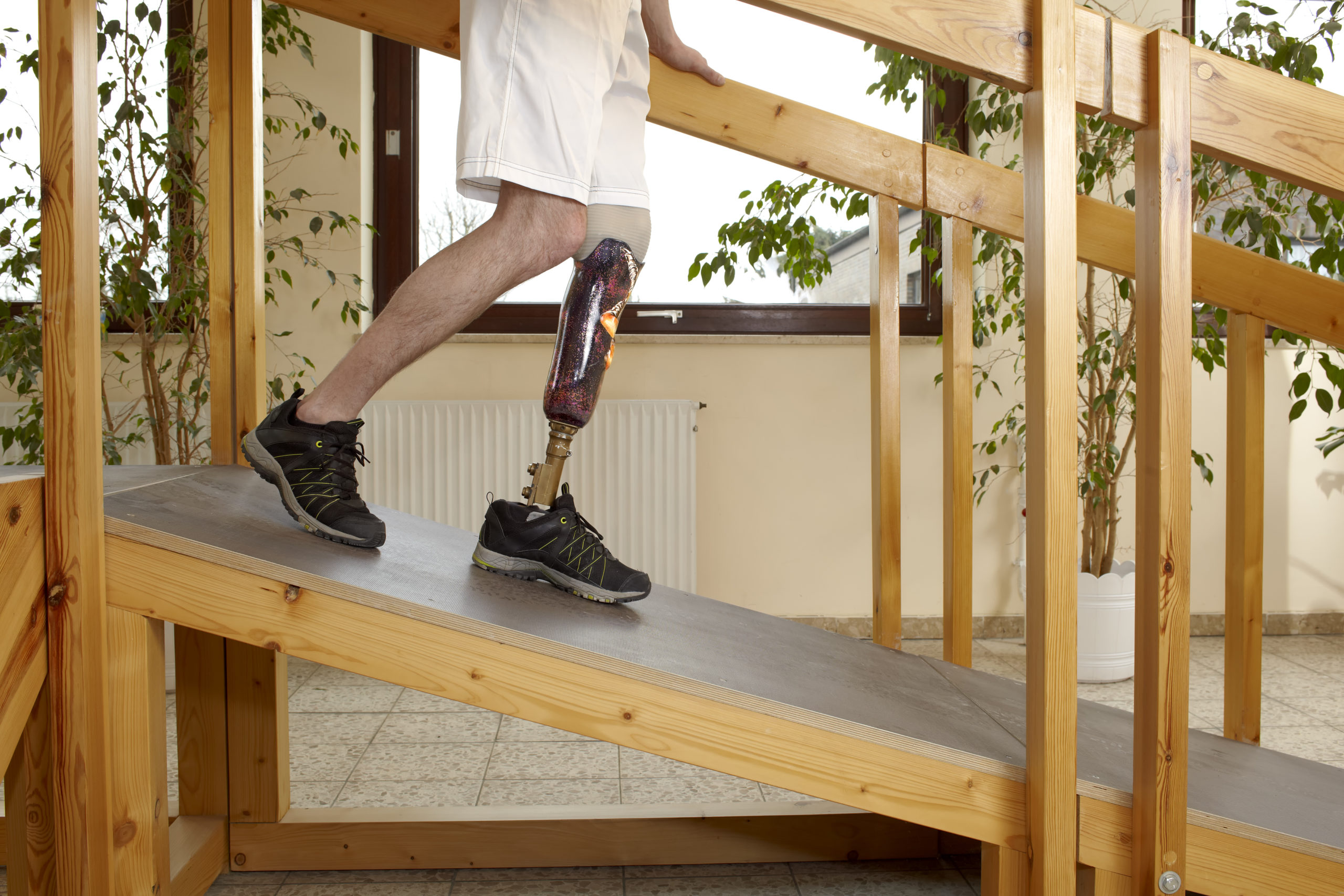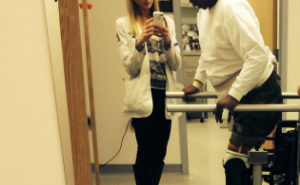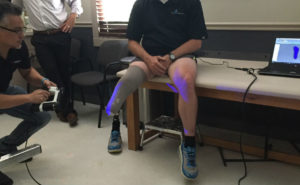After you’ve lost a leg, a bit of hosiery might not seem like a crucial step toward independence—especially compared to the sophisticated technology of modern prosthetics for amputees. Without shrinker socks, fitting and ultimately wearing prosthetics would be much more challenging.
Most patients are understandably eager to begin using their prosthetic leg or legs. Yet swelling from the incision means that the residual limb won’t become its ultimate shape for quite some time. Shrinker socks education helps patients understand how to expedite this process.
Shrinker Socks After Surgery
Shrinker socks gradually decrease post-surgical swelling and also reshape the leg. Rushing to fit a prosthetic without a period of wearing shrinker socks to control inflammation means that prosthetic measurements can be compromised.
The elastic compression stocking ends in a taper; this unique shape puts more pressure at the bottom of the residual limb, where the majority of the swelling occurs compressing the area to gradually banishes swelling.
Amputation surgery often results in a characteristic rounded shape at the bottom of the residual limb. Shrinker socks gradually give the residual limb a more conical or cylinder shape at the end (depending on the area of amputation). This shaping allows the limb to fit more seamlessly into the prosthetic.
After surgery, it can take eight weeks or longer before you can be measured for a prosthesis. Wearing a shrinker sock during this healing process reduces the time between amputation and wearing a prosthetic. You will begin wearing shrinker socks once your doctor deems the surgical incision to have healed enough. Most patients wear shrinker socks continually during this pre-prosthetic phase, except for occasional breaks.
Continuing Use of Shrinker Socks
After your residual limb has healed and is the right shape for a prosthetic, you will still need to wear a shrinker sock at night. If you will be going without the prosthetic for an extended period, the shrinker sock should be worn in the daytime as well as at night.
You’ll eventually be graduating from shrinker socks to “stump socks” or other protective hosiery. After several months of wearing the prosthetic, your medical team will suggest going without the shrinker sock for one night, then seeing how the prosthetic fit the next morning. If there is no problem, you’ll begin transitioning to other hosiery.
Shrinker socks are still useful long after you get used to your new leg. If you will not be wearing your prosthetic for a more extended period, a shrinker sock helps keep the necessary shape. Health issues that cause body-wide water retention can also make shrinker socks useful once again.
Shrinker Socks Education in Arkansas
Shrinker socks vary in terms of length, size, and whether they are for above-the-knee or below-the-knee amputations. It’s important to get the right type, as well as tips on wearing and caring for the compression hosiery. For more shrinker socks education and advanced prosthetics help in the Arkansas area, call our team today to set up an appointment.




Leave a Reply